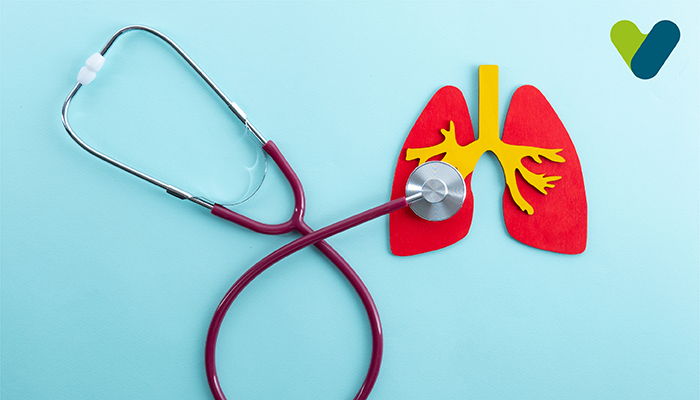Tuberculosis is a contagious disease that affects a large population every year because of its airborne nature. This condition is caused by a bacterium named Mycobacterium tuberculosis that predominantly infects the lungs. In aggressive cases, it may spread to other integral body parts, including the brain, spinal cord, and kidney. When left untreated, TB disease can be life-threatening; the causal agent has the capability to slowly take over our immune system and diminish our immune mechanism. To tackle this condition, you must act promptly when facing TB symptoms. But what are the symptoms of TB disease? This page can help you learn about the signs and symptoms of tuberculosis. Continue reading and address TB signs when needed.
- Signs and Symptoms of Tuberculosis Not to Ignore
- What to do When Witnessing TB Symptoms?
- Treatment Plan Suggested by TB Specialists
Signs and Symptoms of Tuberculosis Not to Ignore
A broad spectrum of signs is associated with tuberculosis; the initial symptoms match that of the common cold and flu. But how to differentiate them from the signs and symptoms of tuberculosis? To get to the answer, read further. General TB SymptomsIn the beginning, within a few weeks of the tuberculosis bacteria infecting our system, we experience the early symptoms of TB mentioned below. Cough Tuberculosis being a disease primarily associated with the lungs causes cough. This cough can be differentiated from regular flu by its longevity. It continues for over three weeks and sometimes contains mucus (phlegm) or blood. Lack of Appetite All of a sudden, you witness a steep decline in your appetite. You do not feel like eating anything, even your favourite food. This situation leads to weight loss, making the immune system vulnerable to other infections. Fever and Chills You keep having high temperatures for days, especially at night. This tends to subside by the day but keeps reappearing every night. When you have a persistent temperature for more than a week, it is high time to see a doctor to check for TB symptoms and treatment. High temperature is accompanied by chills that last for a couple of hours. Night Sweats When the tuberculosis germ invades your body, you sweat profusely at night. This is a common symptom when you have an infection. You should not ignore the repeated occurrence of this situation. It may not directly indicate tuberculosis but might be related to a systemic infection. Fatigue and Tiredness Tuberculosis drains our bodies. It weakens our system and makes us feel fatigued and tired all the time. Pulmonary TB Symptoms The TB associated only with the lungs and not the rest of the body is termed pulmonary TB. the causal organism remains the same as that of the other types of tuberculosis. The disease is differentiated according to the strain of the bacteria and the area it has invaded. Below are the signs and symptoms that pulmonary TB patients commonly face besides the general symptoms. Breathing Difficulty Due to the secretion of large amounts of mucous and continuous coughing, people with pulmonary TB face breathing issues. Besides, in many cases, pleural effusion happens, which indicates a significant fluid build-up in the thin membranes and pleura that ends up covering our lungs. Chest Pain Due to the fluid build-up in the chest wall, the surroundings become irritated, and the patients have chest pain along with breathing problems. Extrapulmonary TB Symptoms In a few patients, the TB bacteria successfully invade organs other than the lungs. The organs like the brain and spinal cord get affected as a result. TB that affects these organs and the lungs is known as extrapulmonary tuberculosis. It has specific symptoms other than general and pulmonary TB symptoms which are briefed below. Swollen Glands When the tuberculosis infection spreads in different organs, various glands are found swollen. This especially is seen on both sides of the neck, besides the armpits. The glands under the chin are also larger than usual. You can find swelling around your groin when extrapulmonary TB occurs. Seizures When the central nervous system (CNS) is affected by Mycobacterium tuberculosis, patients often have seizures. This leads to a condition called tuberculosis meningitis (TBM), which increases the chances of fatality. Bone and Joint Aches Bone tuberculosis causes pain in the trochanteric area and the extraspinal skeleton. This severely reduces the strength of our bones and makes them prone to breakage and fracture. AIDS patients frequently suffer from bone TB because of their compromised immune systems. Persistent Headache As a result of inflammatory changes in the glands around our face, headaches prevail for days to weeks. This can be subacute, acute, or chronic, depending on the severity of the infection. Some people have chronic headaches due to the irreversibility of inflammatory changes. Abdominal Pain This symptom mostly happens when bacteria enter our body by ingestion of some undercooked meat. The organism grows in the digestive tract and causes irritation resulting in abdominal pain.
What to do When Witnessing TB Symptoms?
The best way to deal with symptoms similar to tuberculosis infection is to consult a physician and get diagnosed for the same. The doctor will recommend you have a few tests to confirm the presence of tuberculosis bacteria. Some of the common initial tests include:- Skin test for TB
- Blood Test for TB
- Mucous Test for TB
- Chest X-ray
- Chest CT
- MRI
- USG
Treatment Plan Suggested by TB Specialists
Addressing the symptoms and getting tuberculosis treated is a first-hand necessity for every person diagnosed with TB. Below are the medicines usually prescribed for various types of tuberculosis. Latent TB Latent TB has no symptoms, as observed in several people; the bacteria does not replicate in their system. But that does not rule out the fact that an active infection cannot happen later. For that reason, treating latent TB holds importance. Several regimes of latent TB are followed across the globe. Below are the most effective drugs that are being used to treat latent TB disease.- Rifampin
- Isoniazid
- Rifapentine
- Rifapentine-moxifloxacin for 4 months or
- RIPE TB treatment for 6 or 9 months
- Nine-month treatment with doses of rifampin, pyrazinamide, and ethambutol
- Follow up with rifampin and isoniazid for few months
- Patients with CNS tuberculosis, which includes meningitis, require treatment for over a year. Patients with a delayed response or infected with drug-resistant mycobacterium strains may need adjunctive corticosteroids.

